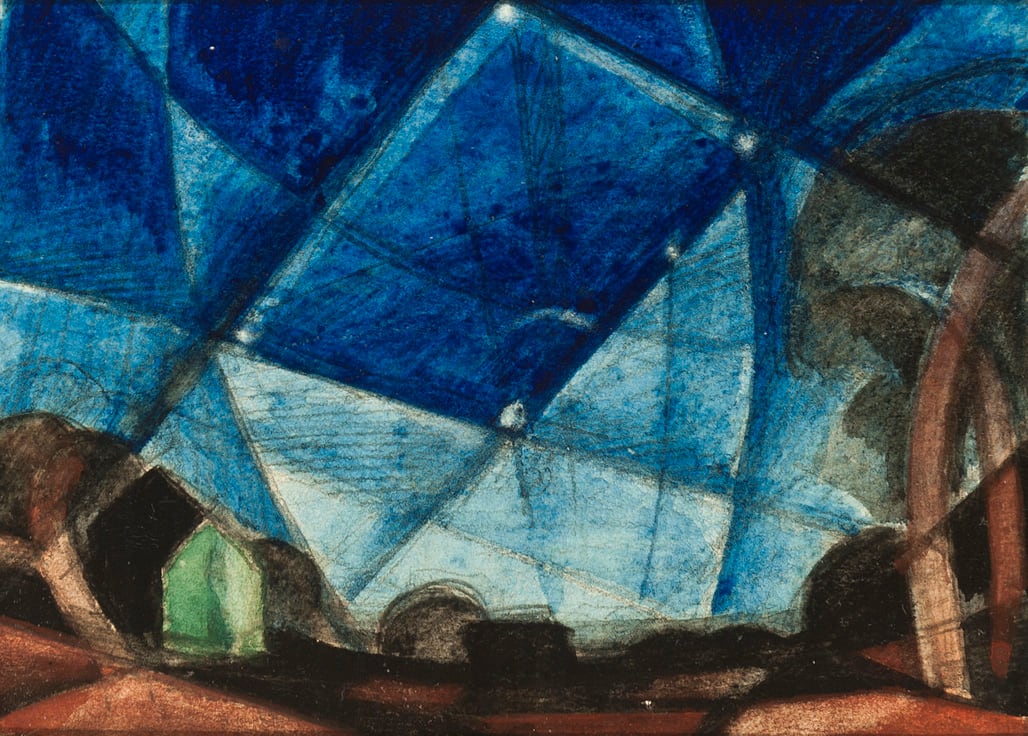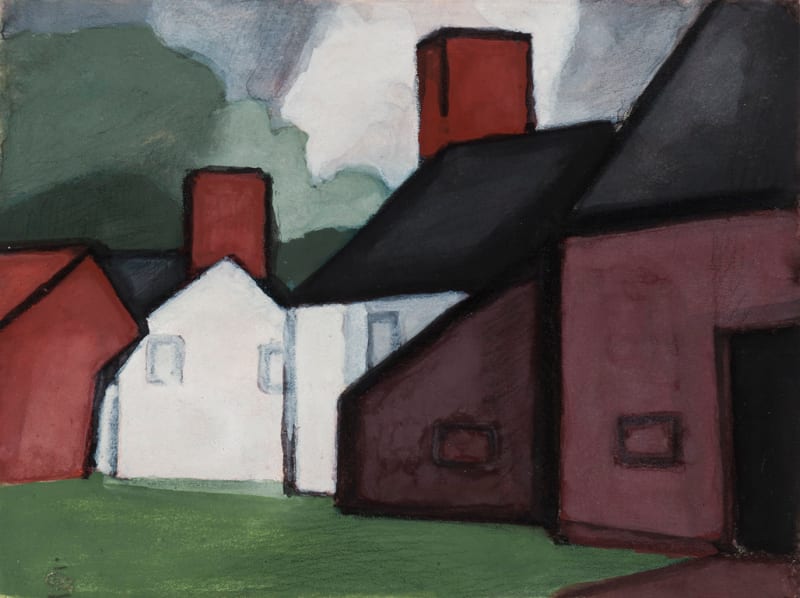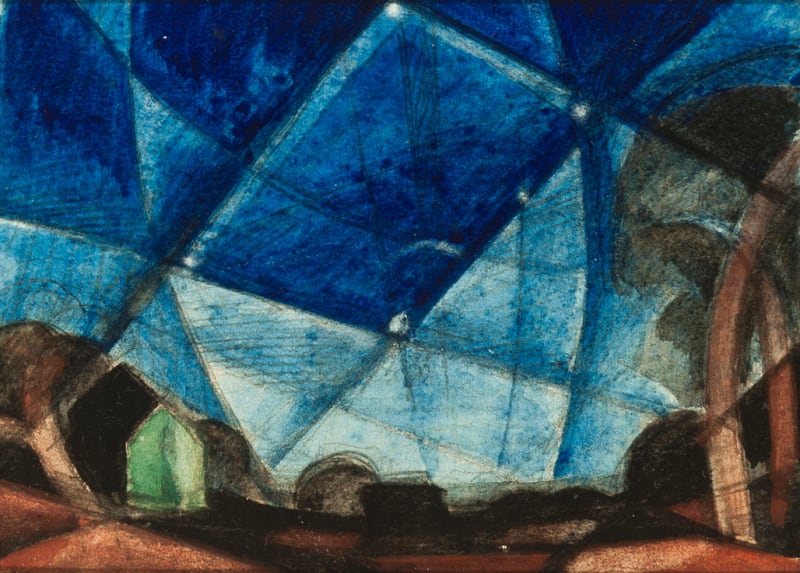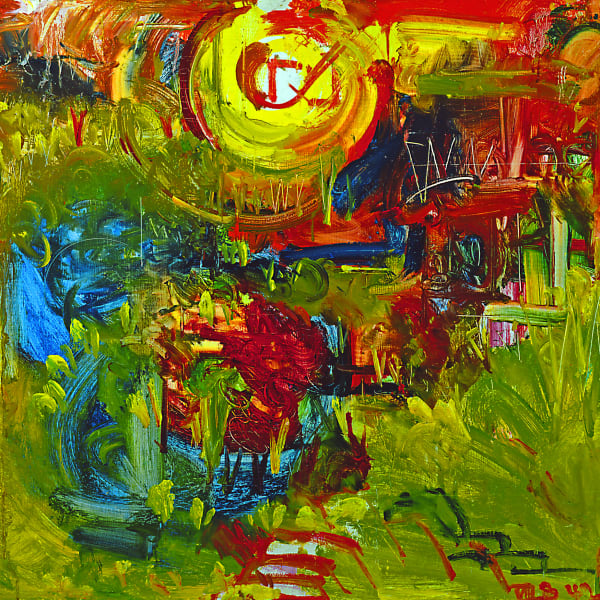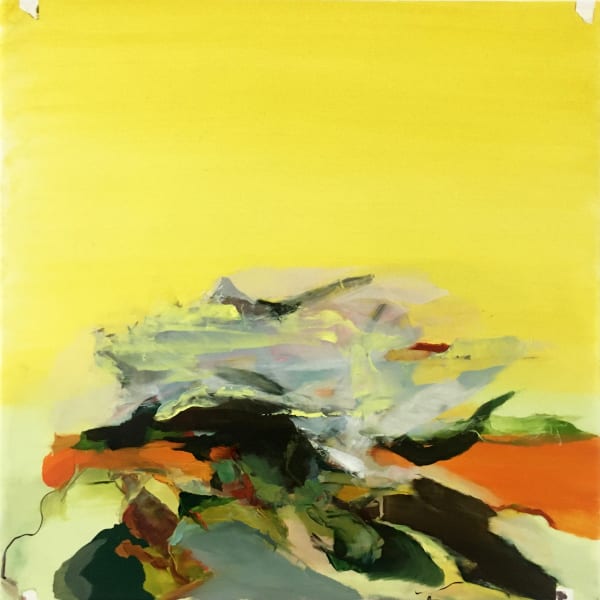
Bluemner dubbed himself the “Vermillionaire” in reference to his reliance on bright red hues.
The son and grandson of architects, Oscar Bluemner was born in Prenzlau, Germany, in 1867. He studied painting and architecture at the Royal Academy of Design in Berlin before leaving for New York in 1892. After several years of working as a draftsman in Chicago, Bluemner returned to New York in 1900. In 1903 the architect Michael Garvin hired Bluemner to design the Bronx Borough Courthouse with the promise that he would credit Bluemner and split the commission with him if the proposal was approved. When Garvin submitted the design solely in his name and won the commission, a dispute developed that lead to a lawsuit. Although Bluemner won, the experience turned him away from architecture.
The son and grandson of architects, Oscar Bluemner was born in Prenzlau, Germany, in 1867. He studied painting and architecture at the Royal Academy of Design in Berlin before leaving for New York in 1892. After several years of working as a draftsman in Chicago, Bluemner returned to New York in 1900. In 1903 the architect Michael Garvin hired Bluemner to design the Bronx Borough Courthouse with the promise that he would credit Bluemner and split the commission with him if the proposal was approved. When Garvin submitted the design solely in his name and won the commission, a dispute developed that lead to a lawsuit. Although Bluemner won, the experience turned him away from architecture.
Between 1908 and 1910, Bluemner made sketching trips throughout New Jersey and Long Island. In 1908, he met Alfred Stieglitz, who sparked his interest in the artistic innovations of the European and American avantgarde. In 1912 he began painting in earnest. Bluemner contributed one landscape to the 1913 Armory Show and wrote an article defending modernism for Stieglitz’s progressive publication Camera Work. He had solo shows at Stieglitz’s 291 gallery in 1915 and at the Intimate Gallery in 1928.
His work was well received by critics, yet Bluemner’s mistrust of dealers hampered his ability to achieve financial success. Fascinated with the formal, emotional, and spiritual qualities of strong color, Bluemner dubbed himself the “Vermillionaire” in reference to his reliance on bright red hues. Until the 1920s, he focused on tightly structured, often architectural compositions in the cubist manner. As his career progressed, he found inspiration in classical music and Freudian concepts of the subconscious. His later landscape compositions in oil or casein, on which he often bestowed titles alluding to music, became more abstract, displaying heightened emotional content, simplified masses, and pulsating color.
In 1926, Bluemner moved to South Braintree, Massachusetts, to live in virtual seclusion. He continued to paint and exhibit until he was involved in a disabling auto accident in 1935. Bluemner died by his own hand in 1938.








